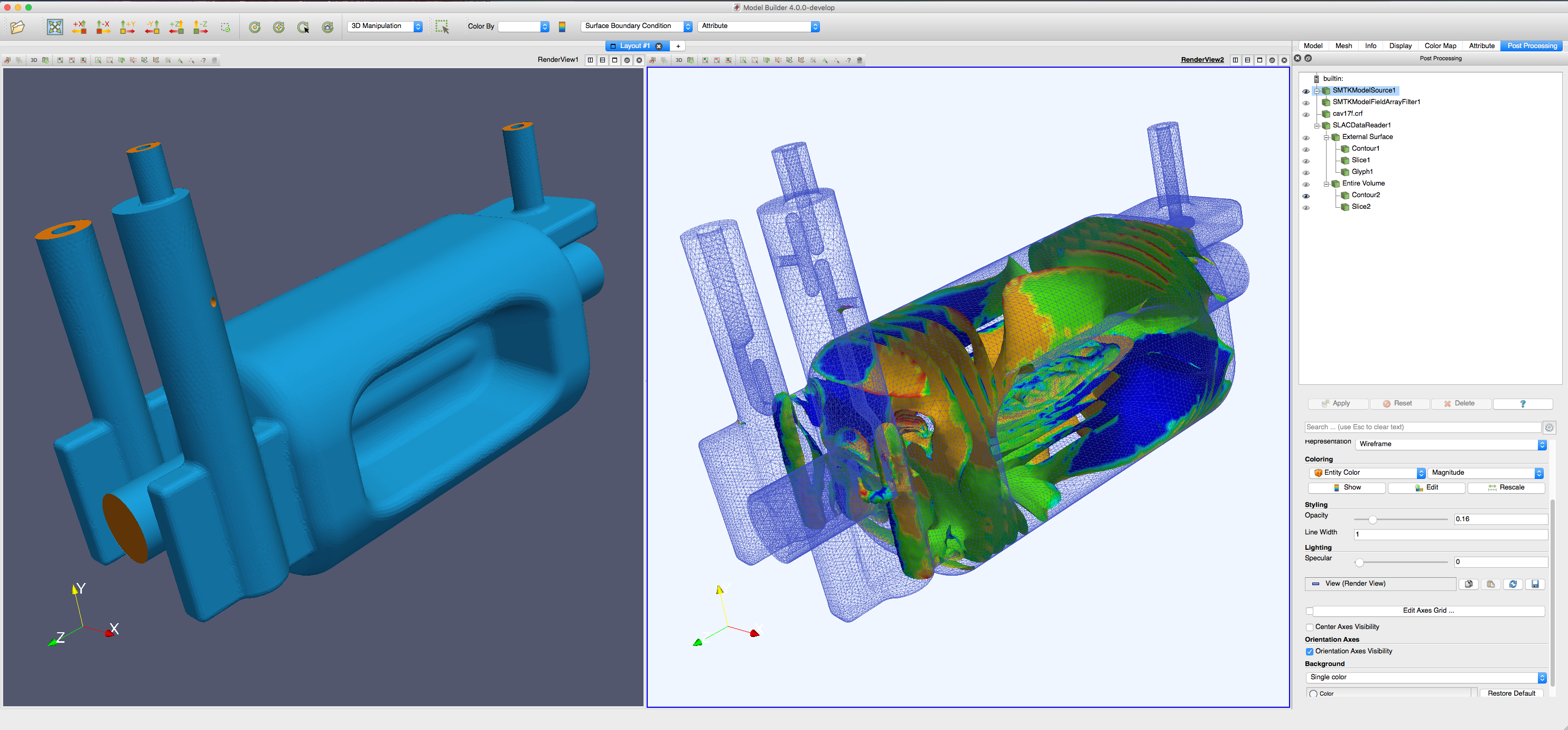Kitware Energizes $1.15 Million Effort to Accelerate Multiphysics

Effort seeks to aid scientists who develop particle accelerators.
Kitware has embarked on Phase II of a Department of Energy (DOE) Small Business Innovation Research project to help scientists study the multiphysics nature of particle accelerators.
“Scientists use particle accelerators in a wide variety of applications including research in pharmaceuticals, electronic materials and clean energy,” said Bob O’Bara, an assistant director of scientific computing and the principal investigator on the project. “While scientists realize the importance of accelerators, they find that modeling accelerator systems raises issues of cost and complexity, as the process involves coupling multiple physics-based simulations such as thermal and structural simulations. Scientists currently lack effective computational tools to couple such simulations.”
Physics-based simulations often employ datasets that have several moving pieces such as models, meshes and information that describes material properties as well as boundary conditions. Many existing technologies require scientists to manually track these pieces, which can lead to errors. For the DOE project, Kitware is working with particle accelerator experts to extend ModelBuilder, an application that automatically tracks data and guides it through the simulation life cycle.

“A major advantage of ModelBuilder is that it provides an intuitive way to set simulation input parameters,” O’Bara said. “ModelBuilder also offers a straightforward user interface, and it integrates with desktop, high-performance computing and cloud-based systems. As a result, scientists can test their designs for particle accelerators in a simple and cost-effective manner.”
O’Bara and his team are currently working to optimize a prototype of ModelBuilder that they created during Phase I of the DOE project. The prototype includes key capabilities for rendering and post-processing data, maintains a modular design and builds on the framework of the Computational Model Builder (CMB).
“The CMB framework makes ModelBuilder highly customizable,” O’Bara said. “Scientists can seamlessly extend code or add plug-ins. Thus, the framework allows the utility of ModelBuilder to reach far beyond multiphysics to fields such as hydrology and nuclear energy.”
During Phase II, the team looks to add functionality for in situ analysis to ModelBuilder as well as support for workflow wizards and new visualization pipelines. At the end of the effort, the team will release the developed software as open source.
O’Bara will present progress on the project at CW16 Accelerator Code Workshop, which will begin on October 31, 2016. To set up a time to meet with O’Bara at the event and to learn how to leverage ModelBuilder, please contact kitware(at)kitware.com.
This material is based upon work supported by the U.S. Department of Energy, Office of Science, Office of Acquisition and Assistance, under Award Number DE‐SC0013884.
This report was prepared as an account of work sponsored by an agency of the United States Government. Neither the United States Government nor any agency thereof, nor any of their employees, makes any warranty, express or implied, or assumes any legal liability or responsibility for the accuracy, completeness, or usefulness of any information, apparatus, product, or process disclosed, or represents that its use would not infringe privately owned rights. Reference herein to any specific commercial product, process, or service by trade name, trademark, manufacturer, or otherwise does not necessarily constitute or imply its endorsement, recommendation, or favoring by the United States Government or any agency thereof. The views and opinions of authors expressed herein do not necessarily state or reflect those of the United States Government or any agency thereof.